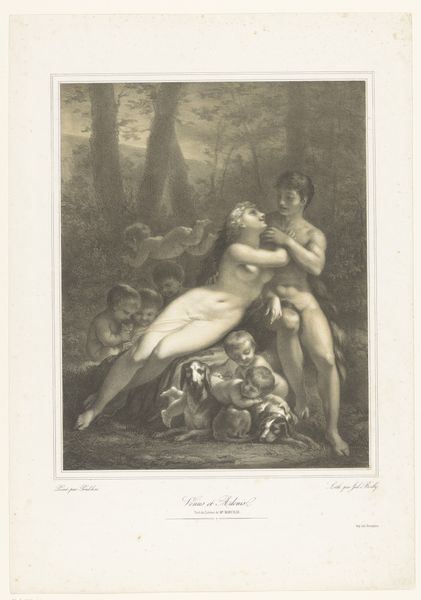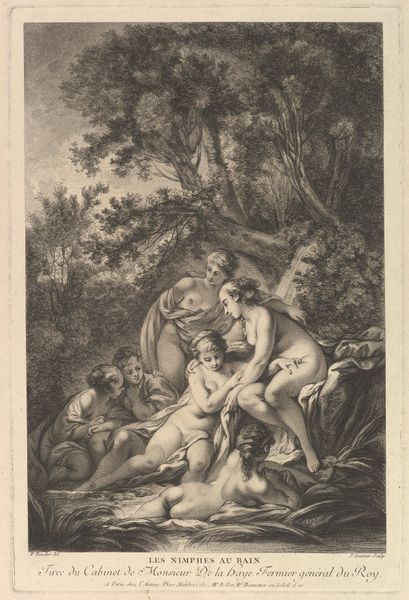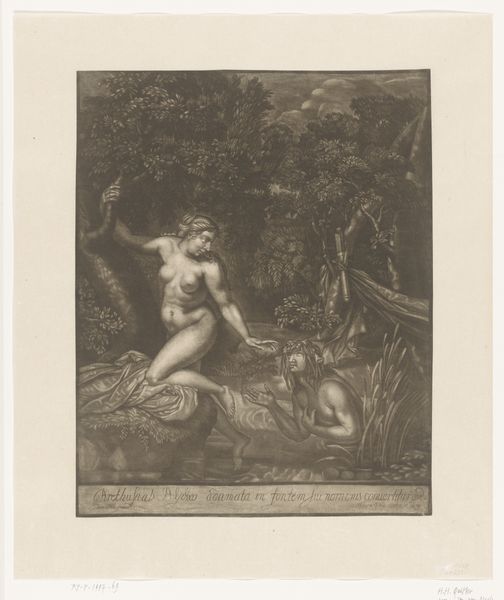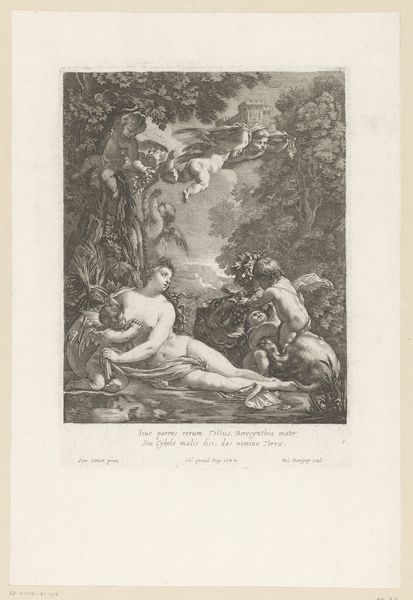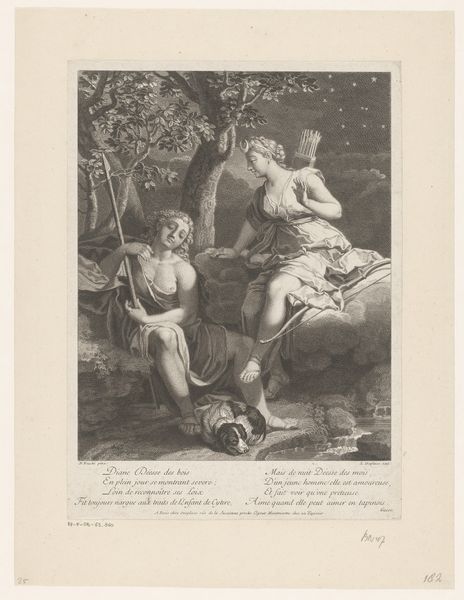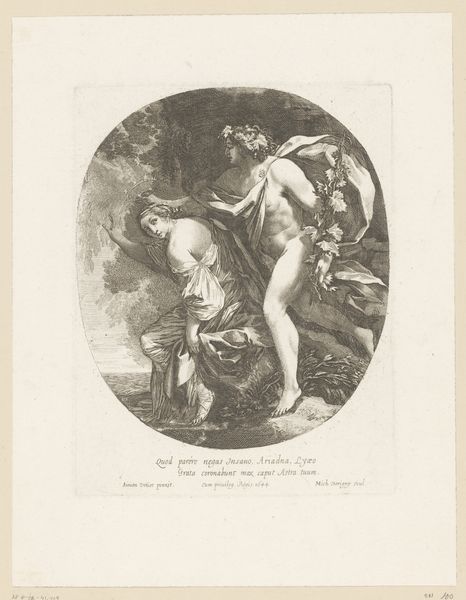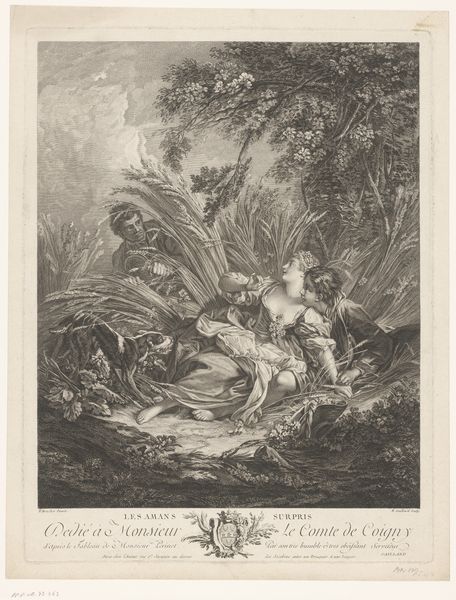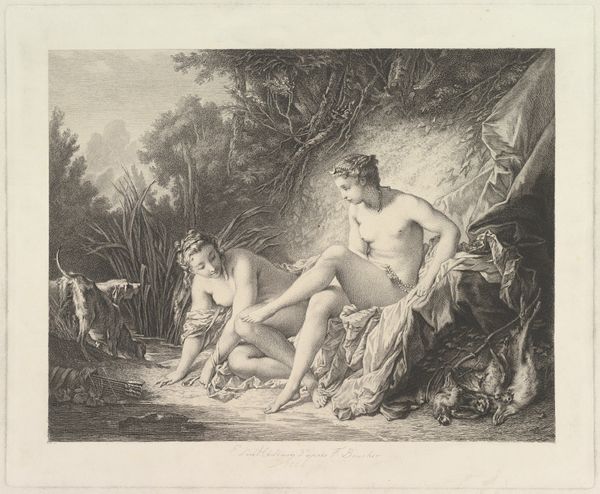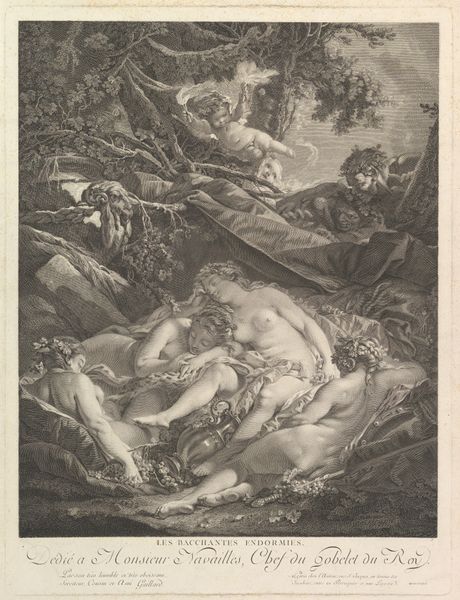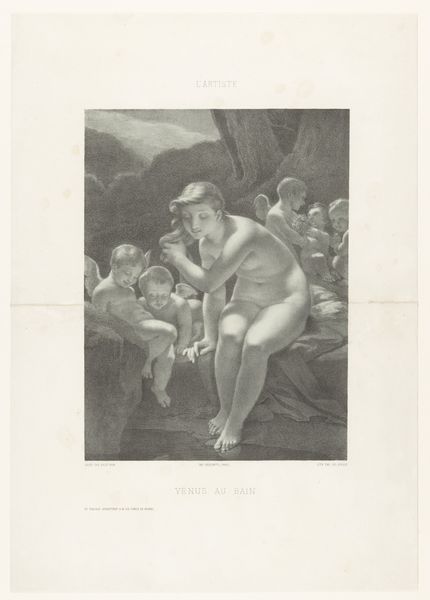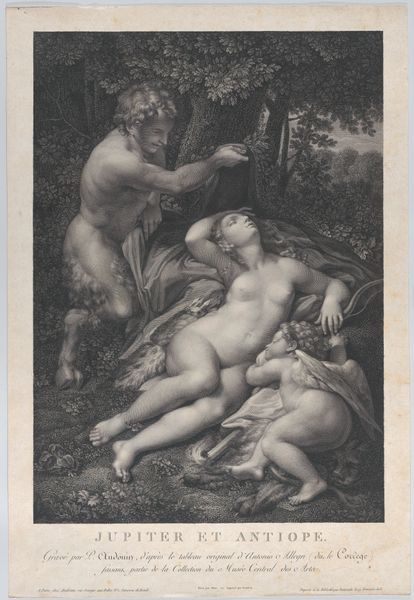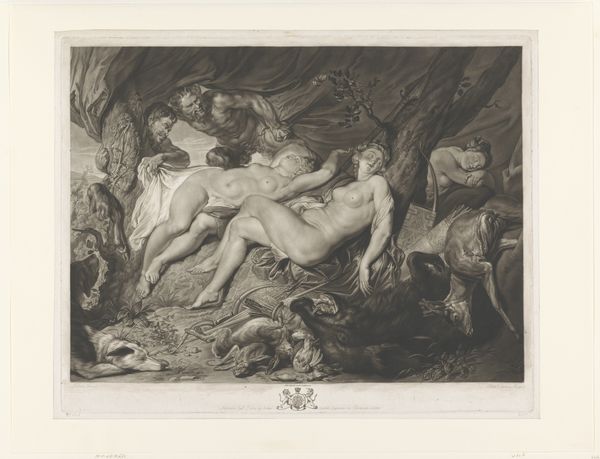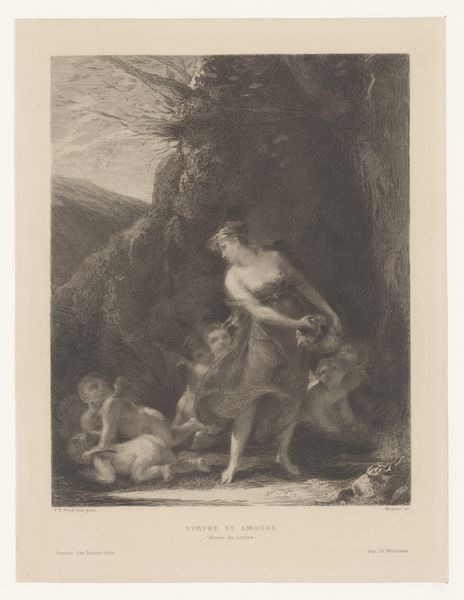
print, engraving
#
neoclacissism
# print
#
landscape
#
classical-realism
#
figuration
#
history-painting
#
nude
#
engraving
Dimensions: height 312 mm, width 236 mm
Copyright: Rijks Museum: Open Domain
Curator: Welcome. Let’s turn our attention to "Venus en Adonis," an engraving attributed to A. Lamy, created sometime between 1820 and 1881. It depicts a scene steeped in classical mythology. Editor: My immediate response is a sense of overabundance, perhaps even excess. All these cherubs spilling out of the sky…the rather imposing musculature on Adonis… It’s all so theatrically romantic, isn't it? Curator: Indeed. We see that dramatic sensibility so typical of the Neoclassical movement. Consider how the artist renders Venus and Adonis in a very idealized, almost sculptural, manner, directly echoing classical Greek sculpture. But let’s think about its historical context. Prints like these played a critical role in disseminating artistic ideas to a wider public, particularly to those who couldn't access original paintings. Editor: That's an interesting point, as these figures and scene become mediated through a specific political lens and gendered roles, the vulnerable female form displayed for the public, contrasted by a muscular idealized male figure. Does this not subtly serve a conservative agenda about female submission? And what's with the sad hound? What’s the underlying message, really? Curator: Ah, a more critical reading! Well, the mythological narrative itself is one of tragic love. Adonis, a mortal, was beloved by Venus, the goddess of love. He ultimately meets his demise while hunting. Editor: Right, death during a hunt and Venus powerless to intervene. I notice this idealized vision of romance almost completely excludes any potential violence. Curator: Perhaps. It could reflect the desire to represent heroic narratives in ways that reinforce social ideals but it could also reflect societal amnesia in painting over violent acts. However you decide to understand it, though, "Venus en Adonis" captures a unique moment in the public consumption and circulation of art. Editor: Exactly! The artwork's existence underscores the way power and storytelling in representation play an active role in constructing social meanings that can potentially uphold harmful ideologies. Thank you for opening my eyes up even more. Curator: And thank you for showing me how art historical work and activist interventions create exciting critical work.
Comments
No comments
Be the first to comment and join the conversation on the ultimate creative platform.
